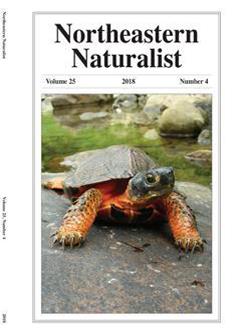How to translate text using browser tools
1 November 2018
Observations of Wood Turtle Activity, Diet, Movements, and Morphometrics in the Central Appalachians
Kathryn R.P. McCoard,
Noah S. McCoard,
James T. Anderson
ACCESS THE FULL ARTICLE

Northeastern Naturalist
Vol. 25 • No. 4
December 2018
Vol. 25 • No. 4
December 2018




